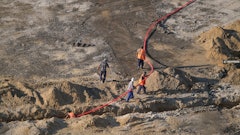
Twenty twenty-three began with a banking crisis and ended with the highest interest rates America has seen in 15 years. It also ended with continued economic growth, low unemployment, and supply chain disruptions throughout the world, making it a profitable, yet challenging, year for small businesses. Continued Federal tightening made borrowing to fund growth more expensive, while a tight labor market meant challenges in finding talent and higher labor costs. In addition, the American consumer, whose spending accounts for most of small business revenue, began to show signs of exhaustion. While consumers continued to spend freely for much of the year, rising personal debt, declining household savings, and rising costs of essentials such as rent, healthcare, and groceries, meant a flattening of discretionary spending in the latter half of the year. As we head into 2024, all eyes are on the Federal Reserve as interest rates hold the key to employment, the housing market, and the consumer spending that fuels the small business economy.
In all, we expect 2024 to be a better year for U.S. small businesses than 2023 as the Federal Reserve executes the soft landing it has been seeking since this tightening cycle began. This means lower interest rates for businesses financing inventory and investing in expansion. It also means a marginal improvement in spending power for consumers driven by moderate wage growth and strong overall employment numbers. While we do expect 2024 to present challenges, especially to businesses dependent on the sale of discretionary consumer goods, we are optimistic about the overall economy and the role of U.S. small businesses in driving economic growth.
The Construction and Home Improvement Industry in 2024
Higher interest rates in 2023 drove mortgage rates to levels not seen since the run up to the 2008 financial crisis. The rise in mortgage rates slowed existing home sales which in turn caused a pullback in the sales of home furnishings, home improvement supplies, and demand for residential construction services. Fortunately, new housing starts bottomed in early 2023 and rose throughout the year and, as interest rates decline in 2024, we expect to see demand for contractors, home furnishings, and home improvement rebound.
Although we expect improved demand for home renovations in 2024, we also see a challenging environment for many contractors as interest rates remain high while unemployment remains low. This means that contractors will struggle to find quality workers at affordable wages, while the cost of financing new work remains high and demand remains below 2021 and 2022 levels.
Factors Impacting the Small Business Economy in 2024
Inflation
The Federal Reserve has succeeded in bringing inflation under control without causing a recession, a feat many of us viewed as unlikely at the start of 2023. Unemployment has remained low throughout this tightening cycle and while wages rose in 2023, wage increases were more muted compared to 2022. The Federal Reserve has indicated that it will likely be reducing rates several times in 2024 with the first cut coming as early as March. Inflation now sits just above 3% and we expect it to remain in this range throughout 2024 as rate reductions spur greater demand in the economy. So, while we don’t expect significant price increases in 2024, we also do not expect to fully return to the 2% and below inflation environment of the pre-pandemic era. This means that small businesses should expect slightly higher than average increases in operating costs and should be prepared to pass these costs on to customers in the form of higher prices.
 As interest rates come down and consumer confidence grows, 2024 should be a prosperous and exciting year for small businesses.@Dabarti - adobe.stock.com
As interest rates come down and consumer confidence grows, 2024 should be a prosperous and exciting year for small businesses.@Dabarti - adobe.stock.com
Manufacturing
Over the past several years, the manufacturing sector has faced persistent disruptions in the global supply chain as wars, pirating, geopolitical posturing, and inclement weather combined to disrupt the flow of trade. As a result, we expect to see a continued trend toward the repatriation of manufacturing to the U.S. and its near-shore allies in 2024. U.S. manufacturers should benefit from this trend as businesses seek shorter and more reliable supply chain alternatives. However, because so many manufacturing components are also sourced overseas, domestic manufacturers will need to assume some of the supply chain risks their customers are hoping to avoid. As a result, we expect more and more manufacturers to explore vertical integration strategies to secure their supply chains or partner with on-shore or near-shore alternatives.
The U.S. government is also actively promoting the repatriation of manufacturing to the U.S. The Infrastructure Act of 2021 and the Inflation Reduction Act of 2022 each provide incentives to companies that build manufacturing capacity in the U.S. and source from U.S. manufacturers. We expect these incentives to continue their positive effect in 2024 as more funds allocated to domestic manufacturing are released. In addition, new manufacturing technologies are being integrated into domestic manufacturing facilities, creating efficiencies and helping to reduce the labor cost differential between the U.S. and overseas markets. Continued cost reduction for U.S. manufacturers is critical as a strong dollar has hurt the competitiveness of U.S. manufacturing on the global stage and is slowing the overall repatriation trend. Now that the Federal has indicated an end to the tightening cycle, there is hope that the dollar’s strength will subside, creating additional export opportunities for U.S. manufacturers.
The Global Supply Chain
The global supply chain today is functioning better than it was several years ago as we emerged from the pandemic. However, critical issues continue to challenge small businesses in sourcing materials and selling overseas. During 2023, persistent disruptions in the global supply chain stemming from wars, pirating, geopolitical posturing, and inclement weather combined to disrupt the flow of trade. Over the last several months, for example, shipping lanes connecting Europe to the Middle East and Asia have been disrupted by Houthi militants who are intent on obstructing trade through the Red Sea. At the same time, ships passing between the Atlantic and Pacific through the Panama Canal have seen significant delays due to drought in the region which limits the water necessary to operate the Canal. In addition, the war in Ukraine and continued geopolitical tensions in the Taiwan Strait make international supply chains difficult to manage.
From previous disruptions, small businesses have learned the benefits of shorter supply chains and greater on-shore or near-shore production. As a result, we expect to see continued growth in domestic manufacturing and the integration of new technologies that promote automated production. We expect these trends to be net positives for the small business community.
The Political Environment
With 2024 being a presidential election year and an already divided government struggling to pass basic legislation to keep the government functioning, we have little expectation of significant economic legislation (beyond passing a budget) to occur this year. With the possibility of a government shutdown looming as we write this, we see the credible threat of a shutdown in 2024. Any shutdown would lead to market volatility, impacting interest and currency rates which we already expect to be volatile given the election and the prospect of a new administration in Washington. Small businesses will be watching these developments closely as they will impact the cost of capital, the cost of goods sourced overseas, and overall economic demand.
Although 2024 presents uncertainty for small business owners, we are optimistic that the economy is poised for a soft landing that will allow for continued economic growth and strong employment without a material increase in inflation. Small businesses should feel better about the economy today, with the prospect of rate cuts just around the corner, than they did a year ago with inflation still high and more rate hikes to come. While this is not a green light for irrational exuberance, small business owners may want to dust off the plans for growth they put on hold last year and determine what financing rates are required to make a new project viable. While many banks have scaled back their exposure to small businesses, many non-bank small business lenders are ready to fill the funding gap left as banks tighten. As interest rates come down and consumer confidence grows, we expect 2024 to be a prosperous and exciting year for small businesses that will serve as a powerful growth engine for the American economy.




















